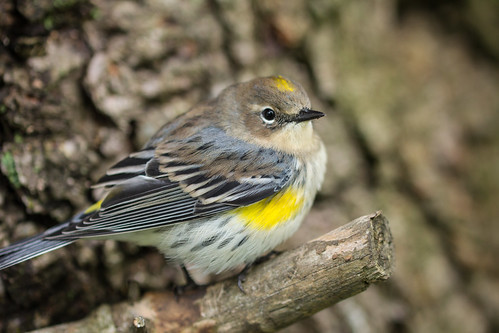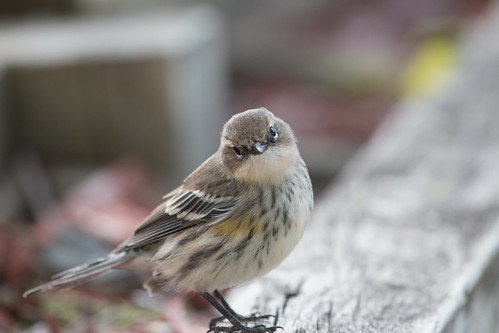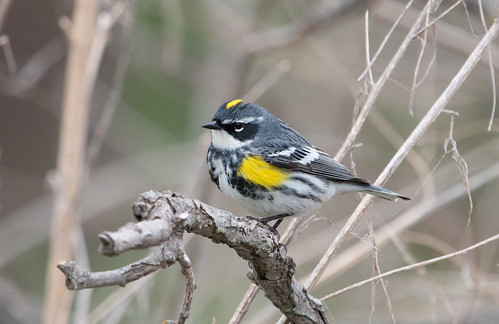Tuesday, October 24, 2017
Henry and Eden's Warbler Rescue
On Sunday, October 22, two children named Henry and Eden came to my house with a problem—a tiny bird was trapped in their shed. They live across the street from me, so it was an easy matter to head right over. One of Henry’s favorite birds in the world is the American Goldfinch, and he described the bird as being about the size of a goldfinch, with yellow under the wings. Based on this accurate description as well as the point in fall migration we’re at right now, I was pretty sure what the bird would be before I got there, and sure enough, there it was—a Yellow-rumped Warbler.
When I’ve rehabbed warblers, I’ve often been struck by how smart they are. I don’t think a single one of them is hunkering down right now reading Ron Chernow’s best-selling book about Ulysses S. Grant—it’s a heavy book beyond even the capacity of Blue Jays to lug around or to read. The one time I visited Gettysburg, there were Blue Jays everywhere—I saw more of them than I did human Civil War buffs—but even those Blue Jays have almost certainly not checked out Chernow’s book, because Ulysses S. Grant wasn’t involved in the Battle of Gettysburg.
But even if any Yellow-rumped Warblers had ever heard of Grant, the probability that they know the Western alphabet, much less use it to read, is about as minuscule as the probability that the Chicago Cubs are going to win the 2017 World Series.
Reading skills notwithstanding, warblers are much smarter than people realize. When I was rehabbing, I immediately learned that warblers quickly adapt to temporary captivity. Within the first day or two, sometimes within the first hour, most of them would flit to my hand for mealworms as soon as I offered them. In their natural habitat, warblers wisely avoid people, but these tiny birds have to pass from northern forests down to the tropics, covering a whole lot of unfamiliar, often hostile, habitats between here and there. If they can’t quickly figure out the ins and outs wherever they find themselves, they’re not going to survive. So they’re far more curious, adaptable, and capable of learning new skills than most of us would expect.
A couple of years ago, I watched a Yellow-rumped Warbler trying to grab cluster flies at the base of a window in Port Wing, Wisconsin. There were far more flies on the inside than the outside, and so I started swatting them and carrying them outside for the little guy. The first time I dropped a handful in a flowerbox near the window, the warbler checked it out within a minute and started gobbling them down. After that, it didn’t fly off when I’d step outside, and would perch at the box as I dropped the flies in. If it finished eating my offerings before I came back out, it flew to the window and gave me a long hard stare as I scurried to get more flies for it.
There were no cluster flies inside or outside Henry and Eden’s shed windows. The shed doesn’t have a door, and apparently when the warbler flew in, it saw the bright windows and got fixated on getting out through them. I suppose if birds could read, they’d be wiser to study up on the properties of glass than read about Ulysses S. Grant, because glass is one thing they really could benefit from understanding. I’ve watched people, including some pretty smart ones, walk into glass doors, so it’s not like we humans are immune to problems with glass. Fortunately, that little warbler was smart enough to let me pick her up and take her out of the shed. After Henry and Eden had a good look, we put her in Eden’s hand. She took 10 or15 seconds to get her bearings, and off she flew!
Fall migration is fraught with danger, but with the birds’ native intelligence, and kind, vigilant kids like Henry and Eden, at least some of these warblers will make it safely to their wintering grounds and, come spring, make their way safely home to the north woods once again.



